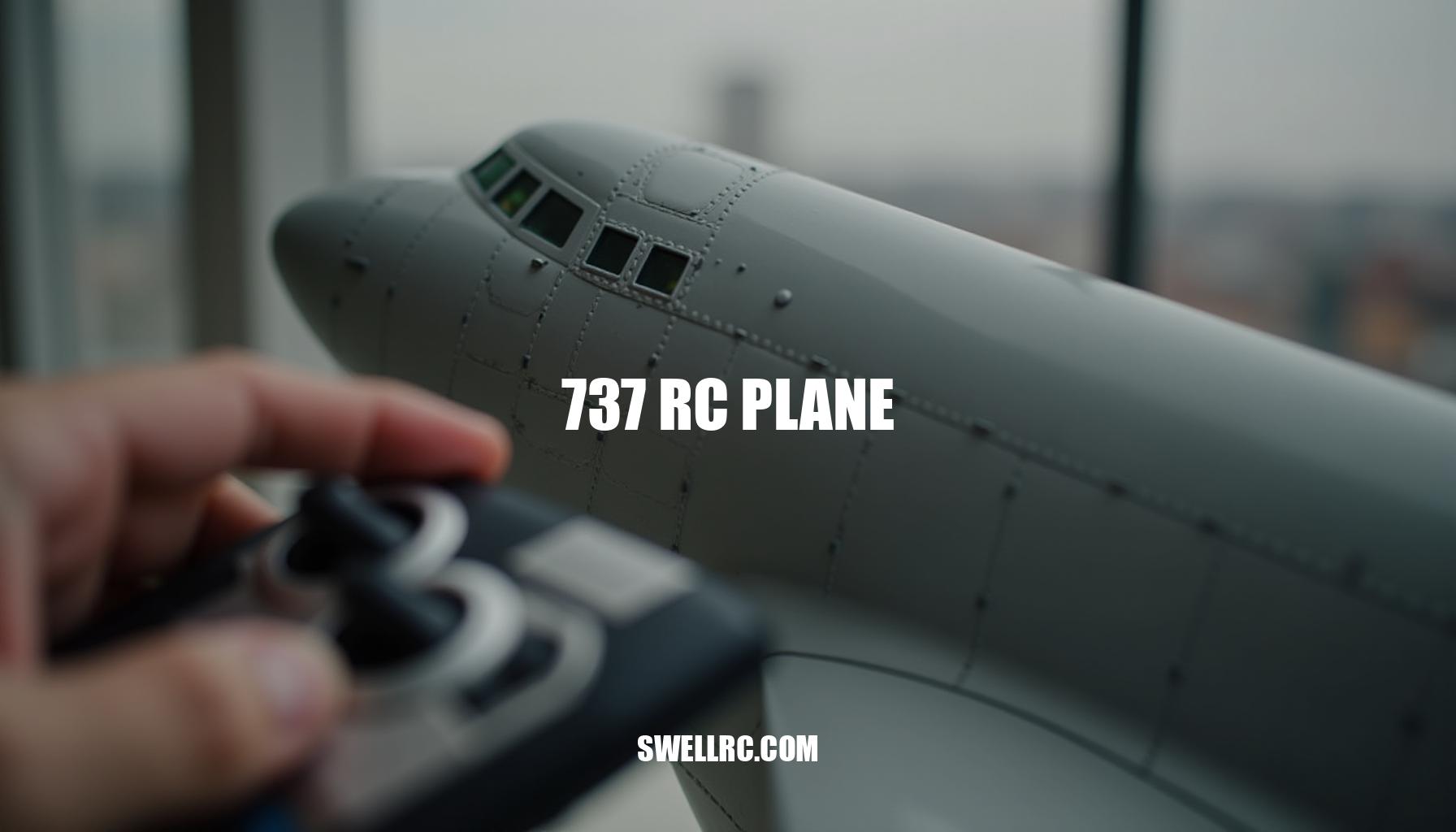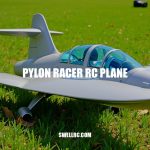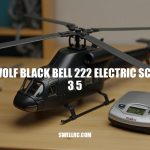The Ultimate Guide to Flying a Realistic Boeing 737 RC Plane
The first time I saw a 737 RC plane lift off, the twin fans spooling up sounded like a promise. I was sold before rotation—the graceful ascent of this Boeing 737 RC model captured every detail of the iconic jet in miniature form, sparking an instant fascination with RC jetliners. A 737 RC plane is essentially a scale model of Boeing’s renowned short-to-medium haul aircraft, typically featuring electric EDF or twin-prop/turbine setups.
These electric RC aircraft are meticulously designed for scale realism, showcasing accurate lights, flaps, and retractable landing gear that bring the thrill of commercial flying to the world of remote control jets.
Within the RC aviation community, scale model airplanes like the Boeing 737 strike a perfect balance between dramatic airliner operations and approachable flight characteristics. They appeal especially to pilots who enjoy smooth, realistic circuits and picture-perfect approaches. The 737 fits snugly among other popular airliner models—such as the majestic Boeing 747 and the sleek 787—offering options for those looking for bigger size or more modern lines.
When planning your build, I often cross-shop the 737 with resources like SwellRC’s Boeing 747 RC Plane and RC Boeing 787, helping refine choices for the perfect jetliner.
In the coming sections, we’ll delve deep into the engineering and materials that bring these twin-engine RC planes to life, master flight handling and setup tips tailored for jetliners, explore various 737 variants and buying insights, and share essential maintenance advice to keep your jetliner shining on any runway. Whether you’re new to the 737 RC plane or a seasoned pilot in the RC jetliners scene, this journey promises to elevate your passion to new heights.
The Engineering Marvel of the 737 RC Plane
Materials matter profoundly in the structural design of scale RC aircraft. The choice between EPO/EPP foam and fiberglass/composites shapes handling characteristics and durability. Foam, prized for its ease and rapid repairability, offers a forgiving resistance to hangar rash damage, making it ideal for builders prioritizing longevity and accessibility.
However, fiberglass and composite RC airframes excel in stiffness, superior finish quality, and optimized weight distribution. This translates to enhanced aerodynamic stability, as these materials better track wind disturbances and provide crisper control inputs during flight.
The fuselage formers and carbon spar reinforcements in the wing are vital for maintaining structural integrity while minimizing weight. Removable wings not only simplify transport but preserve delicate components. Designing scale nacelles involves balancing EDF ducting intake and exhaust areas meticulously, ensuring static thrust remains healthy for reliable performance.
Implementing a twin-engine layout presents notable engineering advantages. Differential thrust options introduce advanced yaw control, while redundancy—up to a point—offers reliability. Matched ESCs and fans are crucial for preventing asymmetric thrust, maintaining directional stability.
Aerodynamic benefits are further realized through large, high-lift flaps combined with slotted flaperons that enable scale-accurate approach speeds and improved low-speed handling.
These engineering refinements are not far removed from what we admire in advanced models like the KT RC foam aircraft fighter drone jet and multi-motor transports such as the Avios C-130 RC plane. Both use optimized fan ducting and servo geometry to balance performance and scale realism.
| Model | Wingspan | All-up Weight | Material | Power System | Handling Notes |
|---|---|---|---|---|---|
| Foam 737 PRO | 1100 mm | 1.4 kg | EPO/EPP Foam | 2x EDF | Forgiving stall, cushioned landings, longer rollout |
| Fiberglass 737 ADV | 1200 mm | 1.1 kg | Fiberglass Composite | 2x EDF | Sharp response, more precise control, shorter rollout |
| Carbon 737 ELITE | 1250 mm | 1.0 kg | Carbon Fiber Composite | 2x EDF | Highly responsive, stable in turbulence, crisp approaches |
In conclusion, mastering composite RC airframes and material advantages involves more than aesthetics—it’s embedded into the entire build, from foam vs fiberglass choices to advanced EDF ducting and twin-engine RC plane control systems. Integrating thoughtful RC landing gear systems and scale aircraft kits enhances this blend of realism and flight performance, reflecting the craft of building and testing at the highest level.
Real Flight Experience – Taking the 737 RC Plane to the Skies
Flying the 737 RC plane for the first time is a thrilling experience that truly immerses you in the nuances of flight performance. The takeoff begins with a gentle throttle ramp to prevent sudden swings, especially critical when facing a crosswind. As you spool up the synchronized fans, the sound builds, reinforcing the scale realism before you smoothly rotate with a slight touch of up-elevator.
Once positive climb is assured, retracting the gear cleanly cements the illusion of a real airliner on departure.
In the pattern, the 737 shines with its precise RC jetliner handling. It tracks like it’s on rails, requiring coordinated turns with modest rudder input to keep the fuselage level. This balance is achieved by managing energy efficiently—airliners favor smooth power transitions over abrupt throttle chops, making throttle modulation a key piloting art.
Comparing this to a delta-wing jet like the RC F-35 shows the 737 is far less twitchy, relying more on momentum and patience. Against a rotorcraft like the RC Airwolf Black Bell 222, it demands more runway discipline and strict adherence to the glidepath.
The learning curve wasn’t without challenges. An early lesson was the tendency to ding the nose gear during crosswind tests.
Remedies included switching to a slightly softer strut spring and dialing in expo rates on the rudder, which dramatically improved ground handling and reduced twitchiness.
To optimize your flying sessions, a careful transmitter setup is essential. Key expo rates are typically 20–30% on the aileron and elevator channels for smooth control inputs, complemented by 15–25% expo on the rudder to tame yaw authority. If your model supports differential thrust, integrating it can enhance low-speed control and crosswind taxiing.
Managing flaps and retracts with dedicated channels allows realistic configuration during approach and climb, especially when combined with a subtle flap-to-elevator mix (3–8% down-elevator) on landing flaps to prevent the aircraft from ballooning.
Other practical tips to nail both takeoff and landing techniques include selecting batteries that keep the center of gravity slightly forward, promoting stable approaches. Utilizing wheel brakes or reverse thrust, where available, shortens rollout distances and improves control on landing zones.
- Radio: Minimum 7 channels for flaps, retracts, lights, and differential thrust
- Expo rates: 20–30% on ailerons/elevator, 15–25% on rudder
- Flap-to-elevator mix: 3–8% down-elevator to counter ballooning on final
- Battery choice: Forward CG bias for approach stability
- Brakes: Wheel brakes or reverse thrust for better rollout control
By blending sound throttle management, transmitter fine-tuning, and disciplined takeoff and landing routines, pilots can truly capture the essence of piloting a 737 RC jetliner—making every flight both an authentic and rewarding experience.
Model Variants, Scale Options & Purchase Insights
When choosing the best 737 RC plane for beginners or advancing hobbyists, understanding the various power systems, sizes, and price considerations is key to making a smart purchase. Electric EDF models dominate the market for their cleanliness, reliability, and user-friendly setup, making them excellent entry points. Alternatively, twin-propeller configurations offer simplicity and longer flight times, suitable for pilots valuing endurance and ease of maintenance.
For seasoned flyers seeking maximum scale realism and the iconic roar of jet engines, kerosene turbine-powered variants provide unmatched sound though they require significant experience and investment.
Variants range widely to fit different flying environments and skill levels. Compact foam EDFs, typically with wingspans around 1.2 meters, are perfect for flying in club fields or smaller open areas. On the other end, large composite models exceeding 2.5 meters boast full lighting systems, sequenced doors, and functional scale flaps, delivering a near-authentic piloting experience.
| Wingspan (m) | Power System | Battery Setup | Average Flight Time (min) | Retract Type | Price Range (USD) |
|---|---|---|---|---|---|
| 1.2 – 1.5 | Electric EDF | 4S – 6S LiPo | 8 – 12 | Basic, spring-loaded | $300 – $600 (Entry) |
| 1.5 – 2.0 | Twin Prop (NiMH/LiPo) | NiMH or 6S LiPo packs | 15 – 22 | Electric retracts | $600 – $1,200 (Mid) |
| 2.0 – 2.5+ | Kerosene Turbine | Fuel tank (Kerosene) | 20 – 30+ | Hydraulic or advanced electric | $2,000 – $10,000+ (Premium) |
For those starting or looking to deepen their knowledge, dedicated resources such as the RC Boeing 737 overviews and buying guides provide comprehensive insights. If your interests extend beyond the 737’s narrowbody charm to the grandeur of widebody jets or wish to build a complete fleet, exploring the 747 RC airplane range offers valuable parallels.
When focusing on performance foam designs combined with compelling scale options, brands like Freewing lead the way with advanced technology and realistic features. Check their lineup at Freewing planes to see comparable approaches that fit various experience levels and budgets.
Choosing the right model also involves considering compatible radio transmitters and battery types to optimize your flying experience and longevity. By balancing your priorities between electric vs fuel-powered RC jets, scale authenticity, flight time, and price, you can confidently select your first or next 737 RC plane.
Tips, Maintenance, and the Joy of Mastering RC Jetliners
Ensuring your RC aircraft stays in prime flying condition and continuously sharpening your piloting skills requires consistent RC maintenance and dedicated practice. Before and after each flight, run through a thorough maintenance checklist including inspection of airframe components like hinges, control horns, servo arms, and linkage slop to prevent mechanical issues. Power system checks are equally critical—verify EDF fan balance, monitor motor temperatures, confirm ESC cooling paths, and re-secure nacelle screws to maintain reliable thrust.
Don’t overlook your landing gear; clean struts and wheel wells, validate retract cycles and door alignment, and ensure steering is properly centered for smooth ground handling. Conduct essential electronics testing such as range-checking your radio, confirming failsafe settings, testing navigation lights, and logging battery internal resistance and capacity for peak performance.
For onsite fixes, use foam-friendly adhesives like E6000 or foam-safe CA glue, opt for fiberglass patching when repairing composite structures, and apply light fillers to achieve a professional finish. Building your skillset involves following a well-structured training arc—starting with a forgiving beginner RC plane such as the Aeroscout S 2 1.1m RTF (link) to master orientation and pattern flying.
Regular flight practice tips include setting up centerline cones to polish your runway discipline, practicing stabilized approaches with consistent power and flap settings, and investing simulator training time to rehearse challenging maneuvers like crosswind corrections and go-arounds before taking them to the field.
Remember, progress in RC flying is incremental. Each clean circuit flown and every greased landing completed marks a milestone on your journey. Engage with the RC community to share these repair tips, trading advice on landing gear service, electronics testing routines, and flight practice strategies—empowering everyone to fly more confidently and crash less.
Conclusion – Why the 737 RC Plane Still Feels Magical Every Time I Fly It
Gratitude fills my heart as I reflect on how today’s advanced materials, cutting-edge electronics, and precise engineering converge to bring the majestic grace of an airliner right to our local club fields. The Boeing 737 RC model exemplifies this beautiful blend of technology and emotion, standing out effortlessly in the RC aviation community for its approachable handling, satisfying scale details, and a learning curve that truly rewards patience and perseverance.
Every flight with this remarkable plane reminds me why I fell in love with RC flying in the first place—calm hands, steady throttle, and that perfect flare—moments that encapsulate pure flight enjoyment and deepen my passion for RC jetliner mastery. In my hangar, the 737 holds a special place not just as a craft to fly, but as a timeless link between meticulous craftsmanship and heartfelt experience.
For fellow enthusiasts, I warmly encourage you to share your unique setups, join local clubs to strengthen bonds within our community, and keep exploring sister airliners and transport models as your skills evolve. Together, we nurture scale realism and elevate the joy of flying to new heights.
Frequently Asked Questions
- What makes the 737 RC plane stand out among other RC jets?
Its twin-engine stability, forgiving approach characteristics, and scale features (flaps, retracts, lights) deliver realistic airliner operations without the twitchiness of some fighter-style jets. - How does the 737 RC plane compare to models like the 747 and 787?
The 737 is typically smaller and more field-friendly, with shorter takeoff and rollout needs. A 747 brings dramatic size and payload complexity, while a 787 often emphasizes modern lines and efficient aerodynamics; all three share the smooth, momentum-based airliner feel. - Can beginners fly a 737 RC plane easily?
A smaller foam EDF or twin-prop 737 can be beginner-friendly with instructor support or simulator practice. True beginners should start on a trainer, then transition to the 737 once basic takeoff/landing skills and pattern work are solid. - What materials are used to build realistic 737 RC planes?
EPO/EPP foam for easy repairs and lighter weight; fiberglass and carbon composites for stiffness, finish quality, and better wind performance; mixed builds combine foam cores with composite reinforcements. - How do you maintain and repair an RC jetliner?
Use a pre/post-flight checklist: inspect linkages and hinges, verify retracts, confirm ESC cooling and fan integrity, log battery health, and threadlock fasteners. Repair foam with foam-safe CA or E6000; patch composites with fiberglass and epoxy. - Are there electric and fuel-powered versions of the 737 RC plane?
Yes. Electric EDF and twin-prop setups dominate for simplicity and cleanliness; turbine versions offer unmatched realism and sound but require advanced skills, careful operation, and higher budgets. - Where can I buy a high-quality 737 RC model plane?
Start with dedicated 737 RC resources and brand ecosystems that specialize in scale jetliners; compare sizes, materials, power options, and support availability before purchasing.



